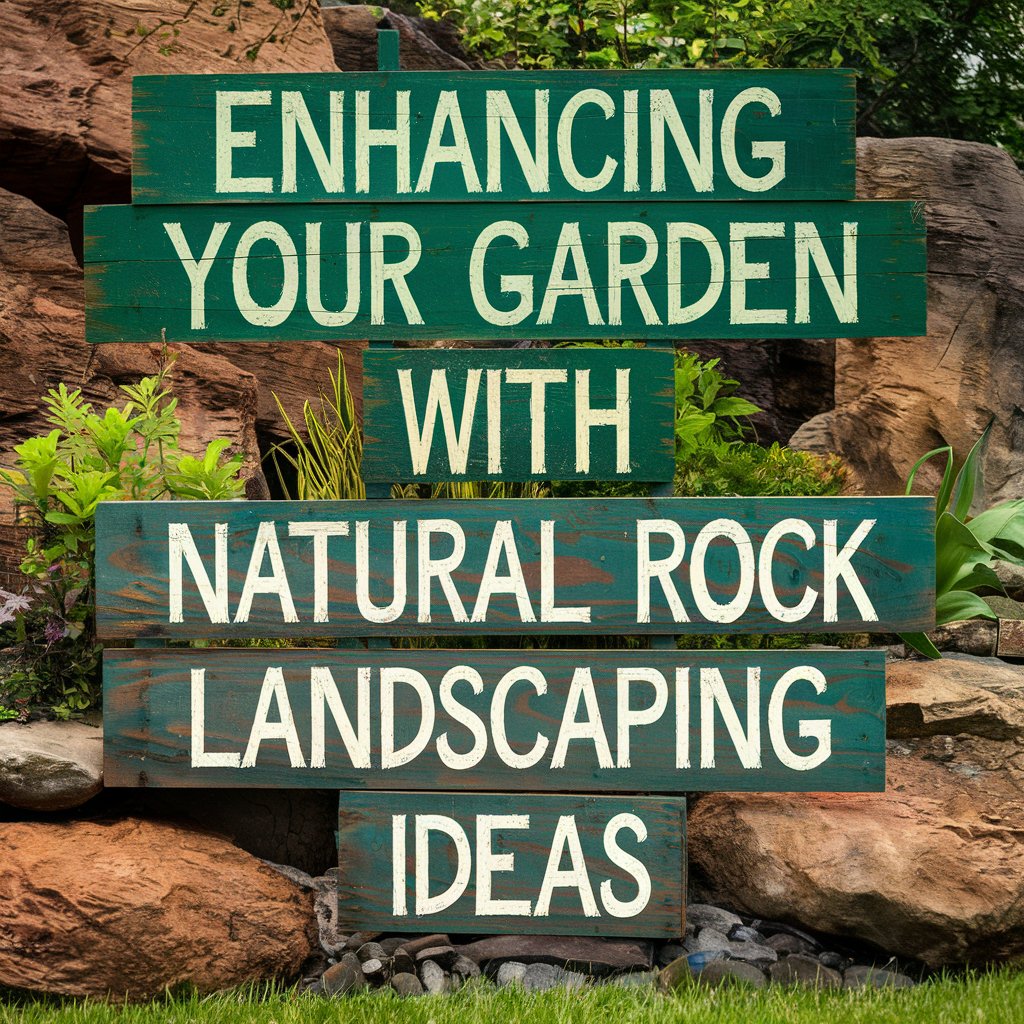Incorporating natural rocks into your garden can elevate its visual appeal, creating a dynamic, textured landscape that brings both beauty and functionality to your outdoor space. Whether you’re aiming for a modern, minimalist look or a rustic, earthy atmosphere, rocks offer a versatile and low-maintenance option for any garden design. Here are a few creative ideas to enhance your garden with natural rock landscaping.
Rock Pathways
One of the simplest yet most effective ways to use rocks in your garden is by creating a pathway. A rock path adds structure, guides foot traffic, and seamlessly blends into the natural environment. You can choose from a variety of stones, such as flagstone, river rock, or crushed gravel, depending on the aesthetic you want to achieve. Flagstone, for instance, offers a smooth surface and a sophisticated look, while gravel gives a more casual and rustic vibe.
When designing your rock pathway, consider its shape and the materials that complement the surrounding landscape. For a more natural feel, allow the path to curve gently, following the contours of your garden, rather than creating straight lines. To enhance the look further, plant low-growing ground covers, such as thyme or creeping sedum, along the edges to soften the hard lines of the rocks.
Rock Gardens
For an eco-friendly, low-maintenance option, consider creating a rock garden. This concept involves using a combination of large and small rocks, interspersed with drought-resistant plants like succulents, ornamental grasses, and alpines. Rock gardens are ideal for areas with poor soil or difficult growing conditions, as the plants used typically thrive in such environments.
Begin by selecting an area in your garden, preferably on a slope or raised area, as elevation enhances the visual impact of the rocks. First, Place larger rocks from a landscape supply company in Orlando, FL to create structure and foundation, then fill in with smaller stones. The key is to mimic natural rock formations, so avoid making the arrangement too symmetrical. Once the rocks are in place, you can plant hardy, drought-tolerant species in the crevices and gaps, adding texture and pops of color.
Rock Borders and Edging
Rock borders and edging provide an elegant and durable way to define different areas of your garden. Rocks can be used to create a natural border around flower beds, patios, or walkways. This not only improves the garden’s overall appearance but also helps prevent soil erosion and keeps mulch in place.
For a sleek and modern look, opt for smooth stones or river rocks. For a more rustic feel, use larger, rugged rocks or boulders. The contrast between the soft plants and the hard rocks creates visual interest, adding layers of depth to your landscape. Consider varying the height and size of the rocks to create a more organic and natural appearance.
Water Features with Rocks
Rocks are essential elements for creating beautiful, natural-looking water features in your garden. Whether you want a simple birdbath, a trickling fountain, or a cascading waterfall, rocks can be used to shape and enhance water elements. The sound of water flowing over rocks adds tranquility to the garden, creating a peaceful retreat.
You can incorporate rocks into water features of any size, from small, self-contained fountains to large ponds or waterfalls. When choosing rocks for water features, opt for those with interesting textures and shapes to enhance the overall design. Flat rocks or slate work well for waterfall tiers, while river rocks can line the base of the water feature for a polished finish.
Rock Mulching
Using rocks as mulch is a practical and visually appealing alternative to traditional wood mulch. Rock mulch offers several benefits, including reducing water evaporation, preventing weeds, and enhancing drainage. In dry climates, rock mulch is especially useful for keeping soil cool and retaining moisture.
Unlike organic mulch, which decomposes and requires frequent replacement, rocks are durable and long-lasting. River rocks, gravel, or crushed stone work well as mulch, providing a clean, modern appearance while complementing the plants and hardscaping in your garden.
Conclusion
Natural rocks are a versatile and timeless element in garden design. Whether you’re looking to create a serene rock garden, define a border, or build a water feature, rocks can help you achieve a harmonious and textured outdoor space. By incorporating rocks into your garden, you not only enhance its beauty but also create a low-maintenance, sustainable landscape that will stand the test of time.






